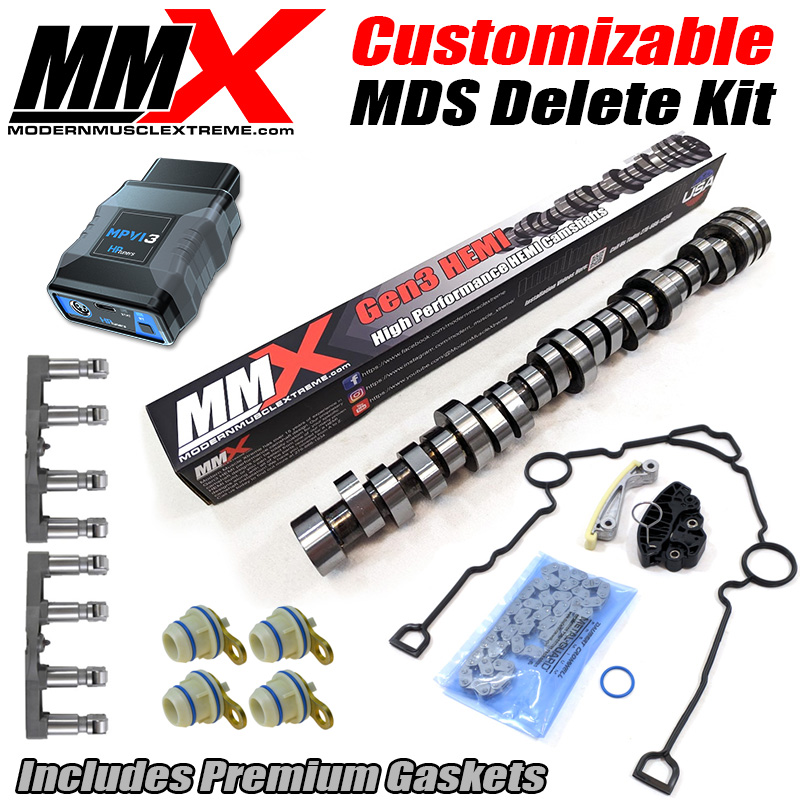HEMI Lifter Failure Tech Article by Byron Walker of MMX

Gen 3 Hemi Lifter Failure, Hemi Tick, and P0300.
First, I would like to start off by saying, there is a large quantity of misinformation and BS on the internet regarding the gen 3 hemi’ s lifter issues. I have seen all sorts of theories, and “install this part to CURE your hemi engine” posts in forums and all over YouTube. Let’s first look at how the Hemi engine oils to better understand this failure. The main hydraulic lifter feed in the G3 Hemi oils backwards from most every other conventional pushrod V8 engine on the market. The oil travels up through a passage at the deck of the engine block, through a restrictor in the head gasket, up around the head bolts, up through a passage in the head, into the rocker shaft, from the rocker shaft through the rocker body to the pushrod, down the pushrod and finally into the lifter. In terms of how the MDS system operates, when the 4 solenoids located on top of the block open, this sends oil flow and pressure around the body of the MDS lifters to compress the plunger/check ball located on the side of the MDS lifter. When this is compressed, the hydraulic portion of the MDS lifter collapses, and the engine runs in 4-cylinder mode. Unlike GM DOD engines, the typical failure is not the actual hydraulic portion, it’s the lifter axle bearings that fail. When this occurs, the roller wheel starts to skid on the lobe of the camshaft and grind through it sending metal all through the engine. The early signs of lifter failure are a slight tick that can be audibly heard when the engine is running at idle. Later signs of failure include a P0300 code indicating a misfire. Further engine damage can be prevented by CEASING TO RUN THE ENGINE AFTER THE P0300 CODE POPS UP. Many shops and customers will unfortunately waste time/money by trying to replace a coil pack or injector for the cylinder that is misfiring, but 95% of the time P0300 code is present, a lifter axle bearing has already failed and is griding away into the camshaft. This leads us to the question, why does this system fail?
In my opinion the root cause of failure is a two-part problem. Issue #1 is the design of the needle bearings of the lifter. The very early HEMI engines had large roller bearings (and a smaller axle) on their lifters. For some unknown reason, Chrysler went away from this design, and made the needle bearings much smaller, and the axle larger. These small bearings do not seem to take the load of being constantly activated and deactivated as well as the early design lifters. The second issue is lubrication. As I mentioned earlier, the only way the actual lifter bore in these engines receives any oil is when the MDS solenoid opens to deactivate the 4 cylinders worth of lifters. This means that during idle, and when the MDS is not active, the body of the G3 Hemi lifter receives NO OIL! (Mild caveat here, the lifter does receive some splash lube up from the crankshaft, but it is VERY minimal as the main oil galley blocks a very large portion of the potential splash lube. Combine this with the very high cam/crank centerline (7.464 Inches-compare that to a small block chevy at 4.521”) and the potential for the lifter to get any splash lube is near zero.
The next logical question is, how to we fix it? We address the two issues I mentioned earlier (Needle bearing Size, and Lubrication). The Latest design 8784AD NON MDS lifters (Hellcat Lifters) have larger roller bearings, so this takes care of problem number one. To remedy problem number two, we simply need to install MDS plugs into the block. Installing the MDS plug allows for full flow of pressurized oil to go around the body of the lifter, and drip down on to the roller wheel to properly lubricate the bearings.In summary, the fix is an MMX MDS Delete Kit. Our kits include the NON MDS Camshaft, NON MDS Hellcat Lifters, MDS Plugs, and other supporting hardware. This fully takes care of the needle bearing issue, and the lubrication issue. Buying quality oil and having a frequent oil change interval also helps tremendously with keeping the factory MDS system functioning for as long as possible.





 International Order Notice:
International Order Notice:



